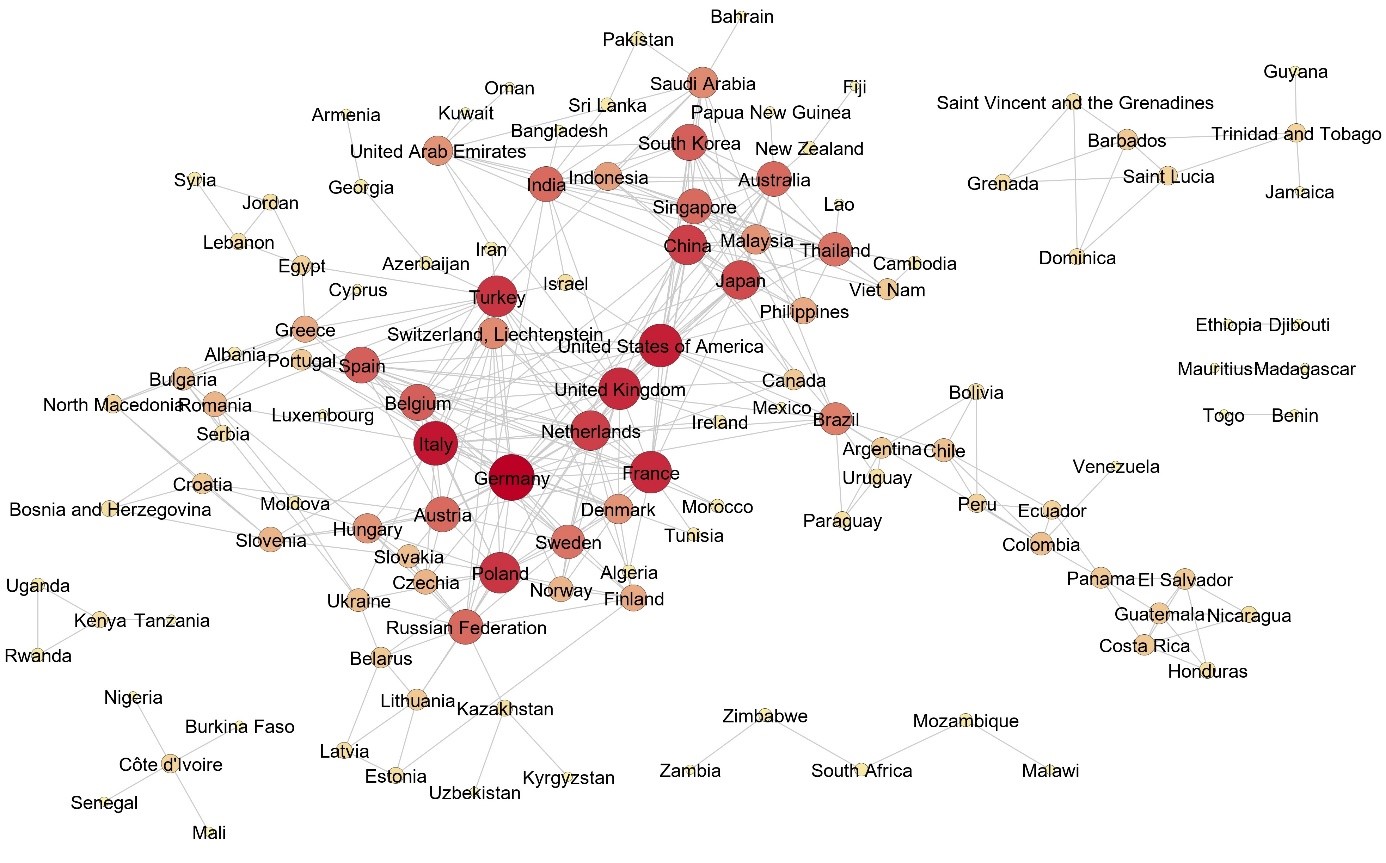
Michael Lischka's work is entitled "Dynamiken Transnationaler Interdependenzen – Veränderungen der Integration von Nationalstaaten im globalen Exportnetzwerk zwischen 1995 und 2018 und deren Bedeutung als politisches Machtpotenzial". In it, Lischka examined the changes in relevant inter-state export linkages.
In his macro-quantitative work, Lischka combines approaches from economic geography and political science. This operationalises inter-state interdependencies as cross-border flows of particular mutual importance. This enables a relational perspective on inter-state linkages, allowing them to be captured and analysed using methods of social network analysis.
Central results of the work are:
- Global interdependence levels have grown steadily from 1995 to 2018.
- Today's export network shows an import-heavy core and an import-weak periphery, if the similarity aspect 'importance as a sales market' is considered alone. The core consists mainly of the established industrialised countries and emerging economies. The periphery consists increasingly of countries with lower economic indicators.
- The core-periphery dichotomy is based on highly divergent development patterns among the nation states.
- If, instead of economic similarity indicators, the focus is on the interdependence of the states, a spatially differentiated multi-core structure emerges, consisting of a main core of the largest economies and a heterogeneous periphery with different groups of countries, each of which forms centres with a particular local density, i.e. they are more strongly interconnected than with the core.
- On the one hand, the multi-core structure speaks for an existing economic North-South divide in the world economy. On the other hand, it highlights the importance of South-South linkages and thus enables a perspective beyond the popular core-periphery dichotomy.
- Mainstream foreign trade theories cannot adequately explain the emergence of economic interdependencies, as they only focus on the monetary output of the complex interdependence structures and not on the interdependencies themselves. These are impressively demonstrated in the present network analysis.

Figure: Network of above-average reciprocal export links that are constant over 24 years (1995-2018).
The examination committee consisted of: Ivo Mossig, Michael Flitner, Herbert Obinger, Julia Lossau, Gabriela Carolina Molina León, Daniel Schuster.
Contact:
Michael Lischka










